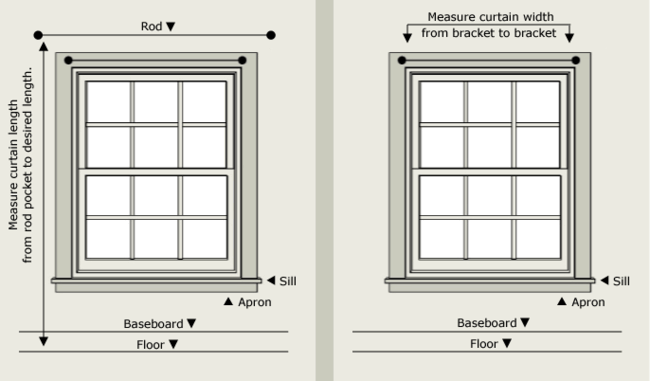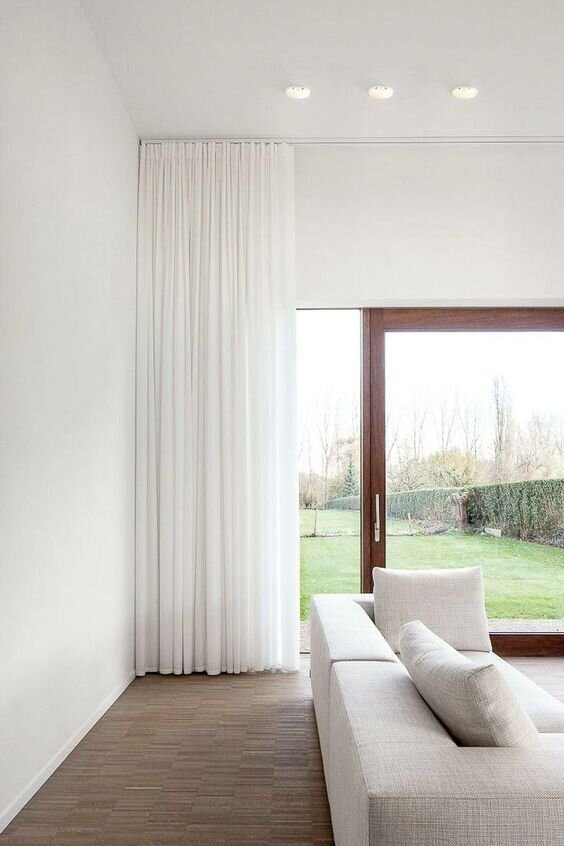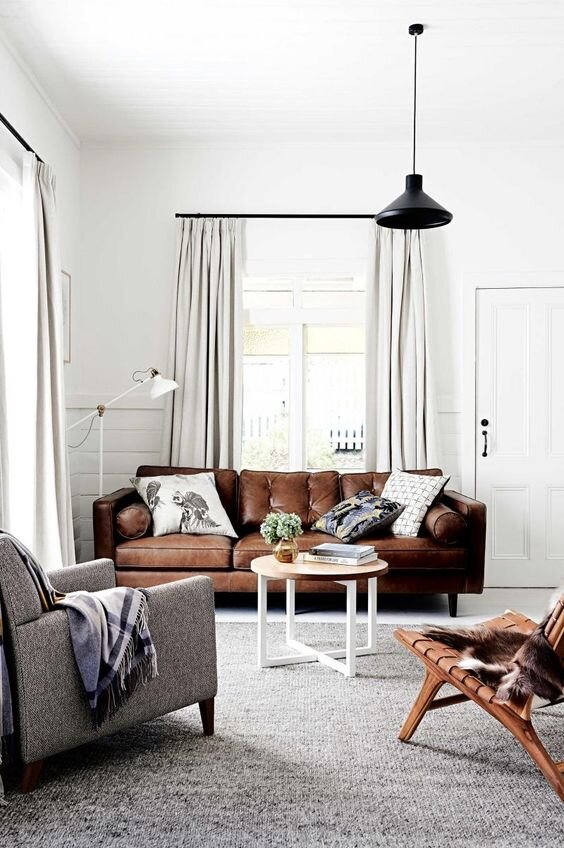Our Home DIY Guide: How To Hang Your Curtains Like A PrO_
Hanging curtains is more tricky than most people imagine. Get it right, and your room can look more sophisticated and spacious. Get it wrong, and your space can seem frankly awkward and like a cheap hotel. You can avoid these multitudes of schoolboy errors by preparing ahead of time and getting measurements down correctly so you can avoid those predictable refund trips to the department store. We have taken the time to show you how to avoid hanging your curtains too low or too narrow by creating this wonderfully simple step-by-step guide.
Where Do I Start?
There are two measurements you need before you start:
The height of the curtain rod/rail to the floor
The width between the two the two brackets or window frame.
How High Do I Go?
Generally speaking, your curtain rod should be positioned 2/3 between the window and the ceiling, unless you are hanging patio or bay windows which can be attached almost flush to the ceiling, this technique is using a lot for many contemporary homes with walk-through windows. If you have a Victorian period house, you may have a picture rail and coving to contend with, so curtain rails maybe your only option if the space between the ceiling and window frame is limited. Again, I would also opt for a rod over a rail myself but if you do choose the latter, aim to mount it a couple of inches above the window frame.
How Much Curtain?
Go for double the width of your window as this will give you plenty of pleating. If you fail to do this, the fabric will look like World War II black curtains as they will only stretch so far and look flat when drawn together. So if your window is 100cm wide, go for 200cm curtains.
If there is one thing you should do, make sure your curtains 'kiss the floor'. Don't let them pool on the floor, a style which is fine if you live in Scarlett O'Hara's plantation house perhaps but not for any home in this decade. They will also get dirty very quickly, something you want to avoid if you are going for light sheer white curtains. Hang your curtains too high, and they will let the draft in and look like a doll's house.
Curtain Rods and Rails
Rails can look a bit cheap and tend to be made of PVC plastic, though John Lewis does some great metal versions which can extend to any length. If you can afford to invest in a pole or rod though, I would go for this option, as you can then opt for eyelet curtains or hooks with fasteners. Rods are also much cleaner for bay windows, and you can purchase bay benders or pole connectors to ensure your curtains flow around your window effortlessly.
Curtain Material
Many people choose curtains for practical reasons to keep the heat in mainly or to block out sunlight. Others go for them for purely decorative purposes and prefer sheer curtains to only offer some limited privacy. Consider the weight of the material you use, how the natural and indoor light will make them look at different times of the day. Velvet and large print can be imposing and so go for colours and textures which compliment your walls and frame your window and the light source they produce. The key is not to make your curtains appear to fight with your windows. If you need to block out light, it was quite common to double your curtain material (a patterned fabric along with functional thick plain material underneath) though this technique can make your window like a ballgown hanging off it. Luckily, there are some great blackout curtains available these days which aren't too thick in appearance and do the job quite efficiently.
Tiebacks or Holdbacks?
Choosing between tiebacks or holdbacks is a personal choice and dependent on the styling of your home. I would avoid them altogether but if you need them for practical reasons like busy patio window or front door, then stay contemporary and go for a something minimal like a thin metal holdback or an elegant thin cord or rope the same colour as your curtain fabric, so you don't distract from the overall look. Don't even think of buying large tassel style or cuffs, these belong in your grandma's house and can stay in the 1970s where they belong!
Hanging Your Curtains
Putting your curtains up can be a logistical nightmare. Spacing the hooks and pleating the fabric can be confusing but this video from John Lewis is incredibly helpful. I find the 7cm apart for each hook a handy tip for ensuring there is uniformity when it comes to hanging and tying brand new curtain fabric together for the first 24 hours to encourage natural pleating quite a nifty trick too!
Video: John Lewis
Hopefully our advice will help even the newest DIY enthusiast but remember, many department stores do offer a curtain fitting service if you do get out of your depth at any point.
Love Omar x
To contact us or find out more about Space Shack arrange your Design Discovery Call or follow us on Instagram and Facebook.







